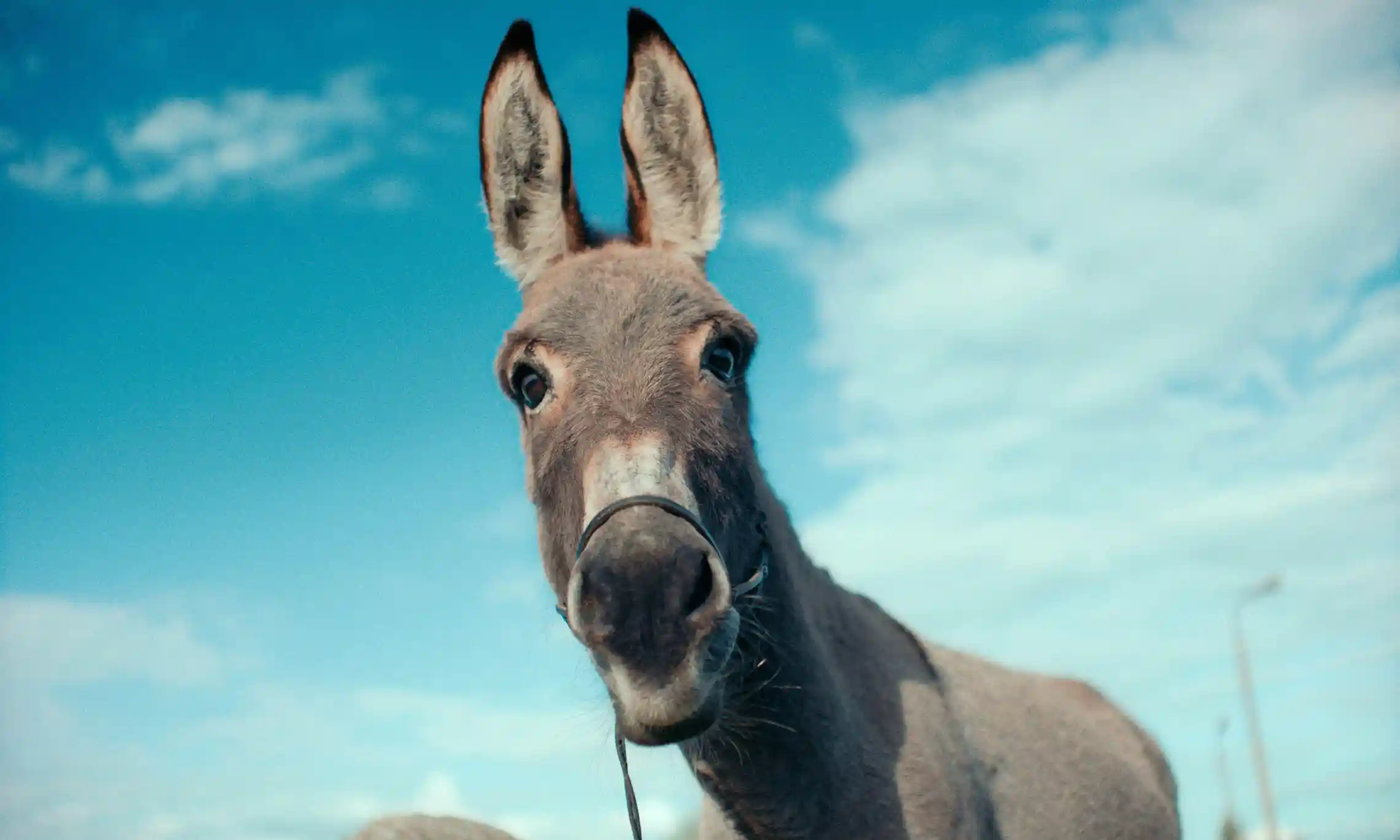The red flashing lights illuminate the screen, like a bounding pulse or neurones firing up. At first, we struggle to make sense of what we see; the close-ups bathed in red seem abstract. We hear panting and animal snorting accompanied by epic, tense music. Then, we recognise a human element – the face of a woman and a female voice mournfully whispering “eo”. Finally, we discern an animal figure in the initially abstract close-ups: hooves, eyes, and hairy back. This hypnotising sequence is cut the wide shot of a donkey and a woman wearing a red dress standing in the spotlight. We realise we witnessed a circus performance as the audience cheers the performers: a donkey EO (played by six donkey actors) and Kasandra (Sandra Drzymalska).
This opening scene of Jerzy Skolimowski’s film EO (2022) perfectly prepares us to eschew our human perception, leading us into a cinematic trans where we become donkeys. We will now see the world from the animal perspective, and Skolimowski proves that cinematic apparatus has immense capabilities to portray the world beyond the human. The film explores the questions of ethics pertaining to our relationship with animals, but it doesn’t do it in an authoritarian and shallow way. It explores the consequences of pro-environmental politics by not only portraying an animal on the screen- it requires us, the viewers, to become that animal.

EO is a tender, touching, but at the same brutal and sorrowful story about a little donkey who is separated from his trainer, Kasadra, after a new law is passed that prohibits animal performance in circuses. The environmental transformation in societal consciousness is ultimately productive and necessary, but it overlooks the less desirable consequences too often. When coal mines are shut, the miners lose their jobs, and when the circus banns animal performance, the nonhuman actors must find different places to live. EO is hunted by the memories of his trainer and the love she gave him. This is the pain of this separation that leads our nonhuman protagonist through forests, parking lots, mountains, and rivers.

In Skolimowski’s film we can find references to Robert Bresson’s Au hazard Balthazar (1966), which also casts a nonhuman actor, a donkey, as the hero. Both films portray the animal suffering caused by humans and thus, forcing us to question what humanness actually is. The Anthropocene has been officially accepted as the name of the current geological epoch, affirming that humans became a major geological force, causing planetary transformations that engender lethal effects on its inhabitants. Understandably, this geopolitical description has been widely critiqued as unjustly encompassing the docile bodies of those who have never been fully considered “human” if our point of reference is the masculine owner of Cartesian cogito. What does it mean to really be human? In the global North, it involves being white, male, cisgender and heterosexual. Everything that deviates from this norm becomes less than a human and, thus, is deprived of the basic laws. The examples are innumerable: abortion bans, struggles of sexual minorities to legalise their partnerships, lack of proper medical care for transgender people, and workplaces (such as call centres) where employees are required to work long hours without breaks.

Skolimowski’s film received many accolades, including an Oscar nomination for best international film. EO certainly deserves all this glory: the movies stripping us bare of our humanness are necessary for the era of the Anthropocene. To tackle the global warming that affects not only our species but all the other beings that share the Earth with us, we must question our self-imposed superiority. Films like EO assist us in this transformation, this becoming-animal that goes beyond passively observing a donkey on the screen. In conclusion, EO suggests that the most ethical type of our encounters with animals is through art and aesthetics.

